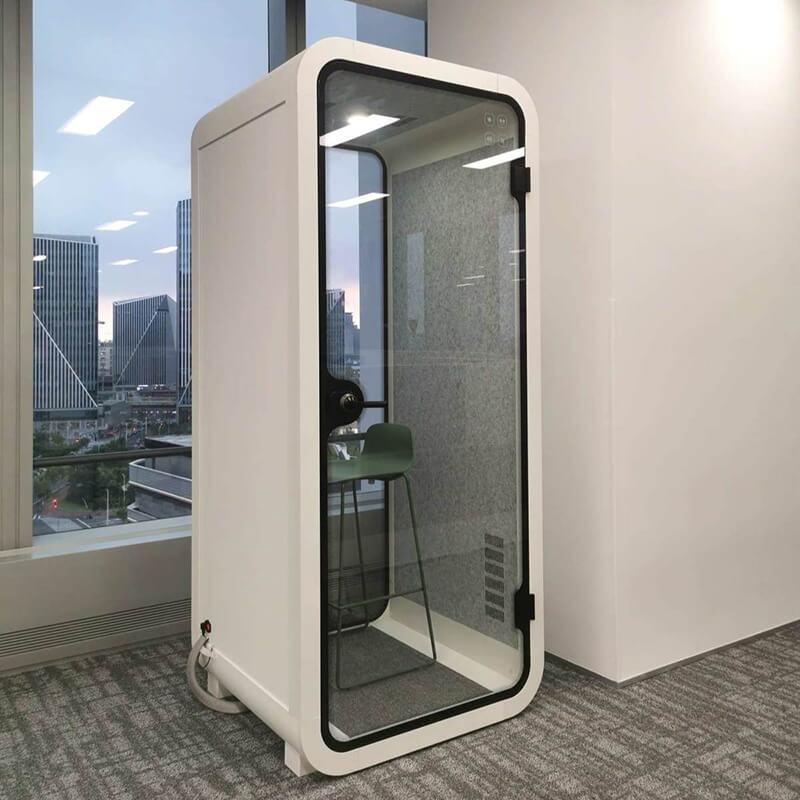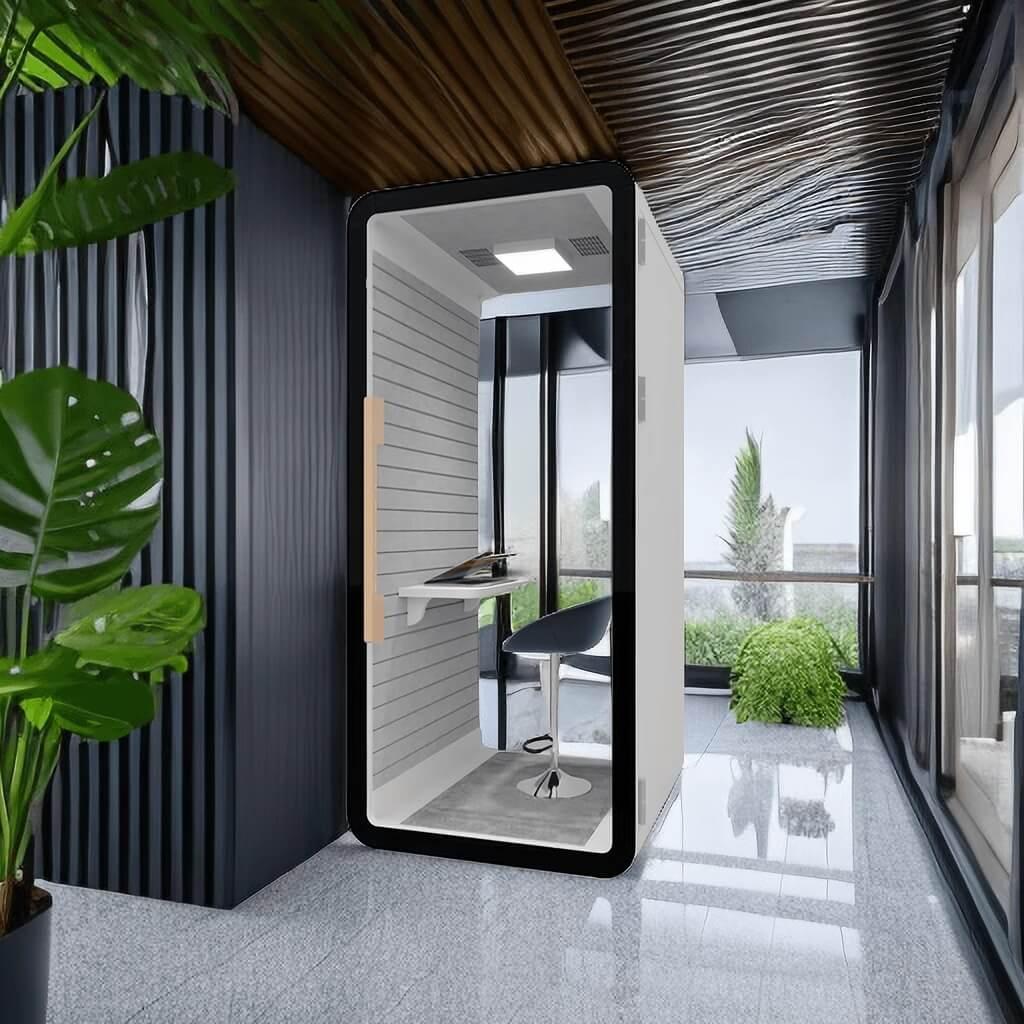The Quiet Revolution in Open-Plan Office Design
Open-plan offices have become a hallmark of modern workspaces, designed to encourage collaboration, transparency, and open communication. The idea was simple: break down silos, spark innovation, and foster a more connected team environment.
But while this layout excels at encouraging interaction, it often fails employees who need quiet, focused time. Noise, lack of privacy, and constant distractions have made open offices a double-edged sword.
Enter the phone booth—a sleek, soundproof pod that’s quickly becoming a must-have in forward-thinking offices. These compact enclosures offer focus and privacy—without sacrificing the collaborative energy that open-plan layouts were meant to encourage.
Below, we explore the flaws of open-plan offices, how phone booths address them, and why these pods are shaping the future of workplace design.

The original vision for open-plan layouts was noble: encourage spontaneous interactions and create a vibrant, innovative atmosphere. And in some ways, they work—more face-to-face conversations, quicker decision-making, and fewer physical barriers to teamwork.
But they come with serious downsides:
Noise Overload
Without walls, employees are constantly bombarded by conversations, phone calls, and background chatter. Research from the University of California, Irvine, shows it takes an average of 23 minutes to regain focus after an interruption—a productivity killer in environments where distractions never stop.
Lack of Privacy
From sensitive client calls to virtual meetings, privacy is hard to come by in open spaces. This lack of personal space leads to stress, discomfort, and reduced efficiency—especially in industries where discretion is essential.
Phone booths—or soundproof office pods—are emerging as the perfect compromise between open collaboration and focused work.

Built with high-performance acoustic materials, phone booths provide a quiet retreat. Whether for deep work or an important call, employees can escape the open-office buzz and focus without distractions.
Confidential discussions, virtual meetings, or simply needing a moment alone—phone booths give employees a private space without leaving the office.
Compact and modular, phone booths are easy to integrate into existing layouts. They can be placed near workstations, in hallways, or next to collaborative zones—providing privacy on demand without eating up valuable floor space.
For tasks that require deep concentration, access to a distraction-free environment is critical. Phone booths allow employees to switch seamlessly between collaborative and focused work.
Constant stimulation in open offices can contribute to stress and burnout. Phone booths offer a small but valuable mental health benefit—a place to pause, recharge, and reset.
As hybrid and flexible work models take over, office design must adapt. Employees split their time between collaborative sessions, focused work, and remote meetings—and they need a space that supports all of it.
Phone booths meet these needs perfectly. Beyond being practical, they send a message: the company values focus, well-being, and diverse work styles. They’re scalable, cost-effective, and easy to install—making them a strategic investment for future-ready organizations.
The rise of phone booths is part of a larger shift toward purpose-driven office design. Instead of one-size-fits-all layouts, tomorrow’s workspaces will be flexible, modular, and employee-centric.
We can expect future phone booths to integrate smart features—air quality sensors, personalized climate control, and built-in video conferencing tech—blending comfort and functionality.
This isn’t just a trend. It’s a transformation. And phone booths are quietly leading the way.

